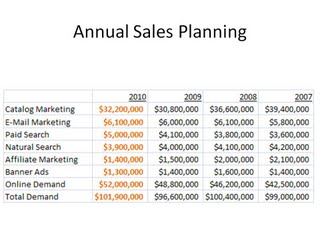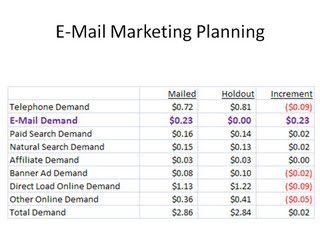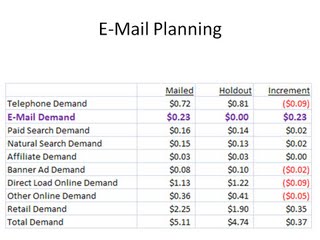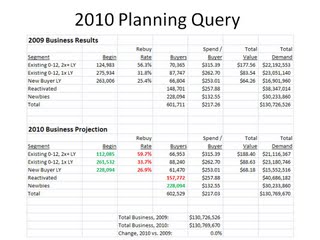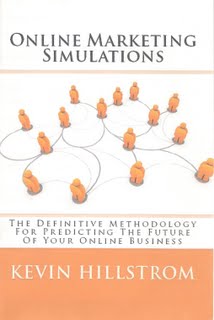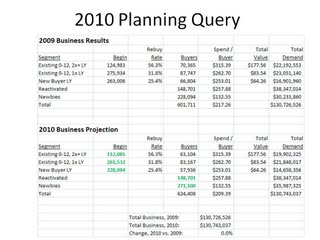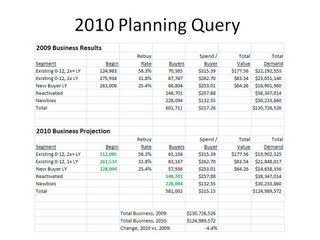Dear Catalog CEOs: The Super Bowl
Dear Catalog CEOs:
This week, America celebrates a national holiday, called "The Super Bowl". This Sunday, the two best teams in football meet to decide who is champion.
How would you decide who is the best catalog brand in the world? Well, Super Bowl style catalogers do many things well, don't they?
A Super Bowl cataloger doesn't mail catalogs to customers who don't want them, and doesn't mail catalogs to customers who don't respond to them. A Super Bowl level cataloger uses sophisticated mathematics to identify the half or more of the customer base that simply won't respond to catalogs. Contact me for help with this!
A Super Bowl cataloger is a true merchant. A merchant believes in product. A marketer believes in offers and audience development. Both are needed, but marketing is feckless if the customer doesn't want the merchandise you have to offer.
A Super Bowl cataloger believes in operational excellence. The Super Bowl cataloger realizes that delivering product in two days with free shipping or $5 shipping generates more long-term revenue than charging $14.95 for seven day shipping.
A Super Bowl cataloger doesn't listen to the pundits. Instead, the Super Bowl cataloger charts a course, and causes others to follow. Multi-channel, Social Media, Mobile Marketing, Conversion Rate Optimization, and a plethora of best practices are just noise to the Super Bowl cataloger. The Super Bowl cataloger cares about meeting the needs of the target customer.
A Super Bowl cataloger doesn't care about catalogs. The Super Bowl cataloger only cares about connecting customers with merchandise, and does not care about the distribution channel that facilitates the connection.
A Super Bowl cataloger develops people. A Super Bowl cataloger has a plan for every employee, capitalizing on strengths, and where appropriate, correcting weaknesses. The Super Bowl cataloger does not outsource proprietary knowledge to vendors.
A Super Bowl cataloger respects vendors. A Super Bowl cataloger does not try to squeeze vendor profit margin --- but instead pays more if the vendor helps generate success.
A Super Bowl cataloger obsesses about online landing pages more than the brand obsesses about catalog spreads. Why? Because landing page optimization can be done in real-time, whereas catalog spread optimization happens soooooo slowly. A Super Bowl cataloger is interested in learning in real time.
A Super Bowl cataloger thoroughly understands that customer loyalty marketing is mostly bunk.
A Super Bowl cataloger thoroughly understands that customer acquisition is the "secret sauce" that fuels long-term business health.
A Super Bowl cataloger listens to customers.
A Super Bowl cataloger leads customers.
A Super Bowl cataloger creates a forum where old-school catalog experts teach the time-honored rules of direct marketing to online newbies. A Super Bowl cataloger creates a forum where online experts teach old-school catalog experts how modern customers behave.
A Super Bowl cataloger does not blindly believe the results of matchback analytics.
A Super Bowl cataloger understands that contact strategy testing and holdout testing is as important as any other marketing tactic.
A Super Bowl cataloger understands how to make tradeoffs in contacts between e-mail marketing and catalog marketing.
A Super Bowl cataloger knows that Paid Search is an important customer acquisition tool.
A Super Bowl cataloger knows that Paid Search complements catalog mailings to housefile customers --- without Paid Search, catalog response decreases. The Super Bowl cataloger allocates Paid Search expense against the catalog (i.e. searches that do not result in purchases are expensed in the catalog profit and loss statement).
A Super Bowl cataloger pays employees who generate orders outside of their job description at the same rate that a Super Bowl cataloger compensates Affiliate Marketers.
A Super Bowl cataloger sees the contact center and distribution center as an arm of marketing, and not as an expense to be managed by Finance.
A Super Bowl cataloger understands the critical importance of gross margin management.
A Super Bowl cataloger would rather be out of stock on items than overstocked.
Ok, time for your thoughts. What else does a Super Bowl cataloger do?
Labels: Dear Catalog CEOs

